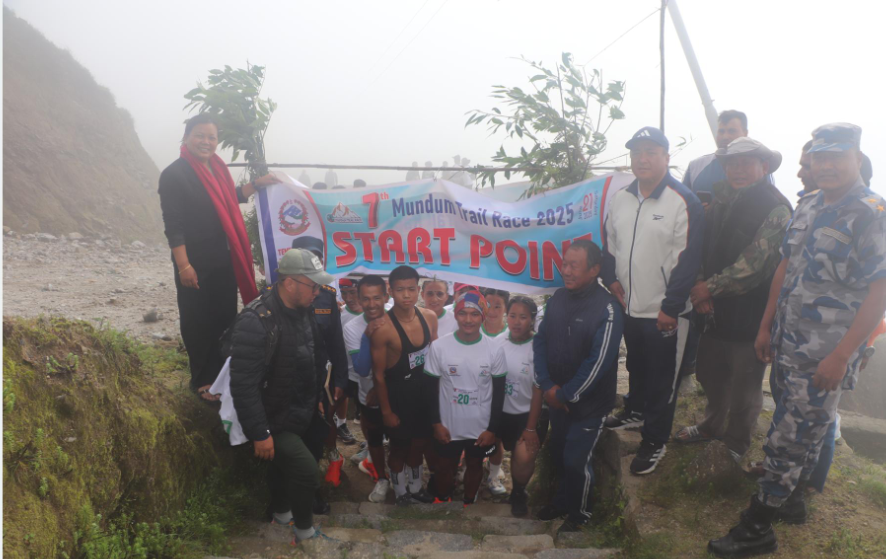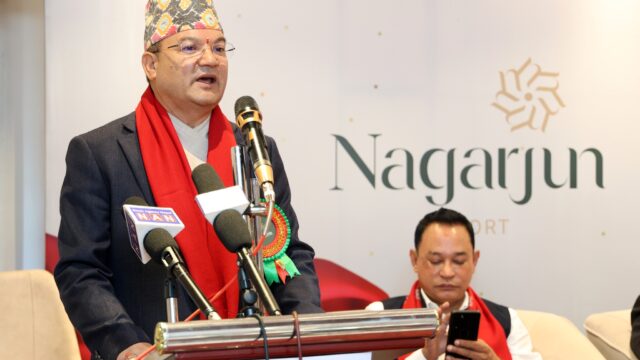In an effort to promote the culturally significant and naturally beautiful Mundum Trekking Route, the seventh edition of the “Mundum Trail Race” has been successfully held. Organized with the aim of popularizing the trail through sports and endurance events, the race sought to highlight the region’s tourism potential by drawing attention to its trails, scenery, and local heritage.
Promotion of Mundum Trail Through Sports
The Mundum Trail Race was not just an athletic event—it was a strategic effort to promote a unique trekking destination in eastern Nepal. The race covered a challenging distance of 22 kilometers, beginning at the scenic Chakhewa Bhanjyang and passing through Temke Danda to the border point Tawabhanjyang in Khotang, before returning via Panchdhare, Ratiya, Majhoule, and Hattikharka back to Chakhewa. The route, filled with rich biodiversity and breathtaking mountain views, provided a remarkable experience to participants while reinforcing the importance of trail-based tourism.
Competitive Spirit and Team Achievements
According to Pavihang Rai, the president of the organizing body Rimachung Education and Sports Academy, nine different groups participated in the race. These groups represented different localities and touristic landmarks of the region. Each group consisted of three men and three women athletes.
In the group category, Silichong team secured the first position, followed by Temke and Maiyung teams in second and third places respectively. The team competition added a collective spirit to the event, fostering community representation and promoting unity through competition.
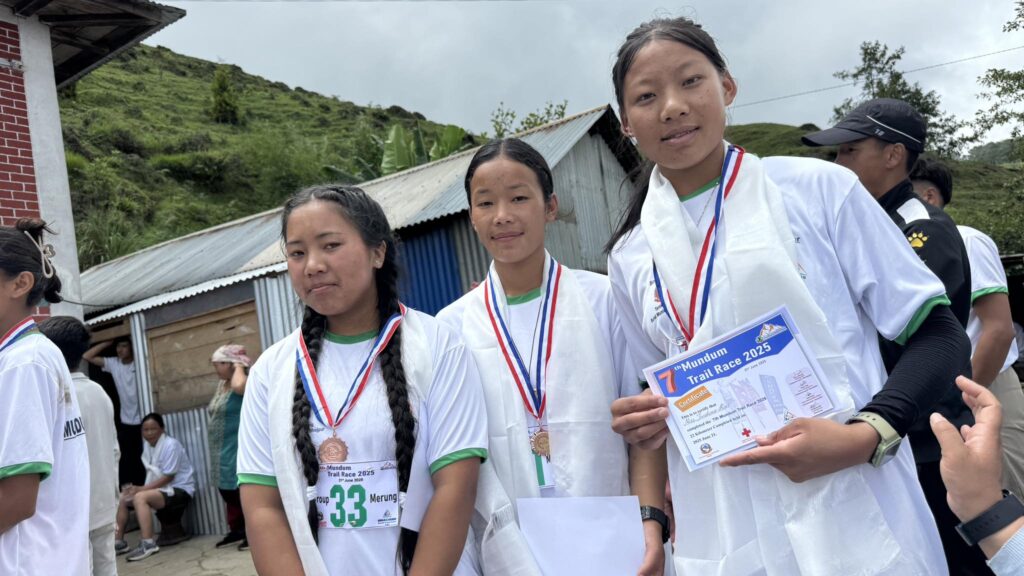
Remarkable Individual Performances
The race also featured an individual category in both male and female segments. In the men’s category, Bishal Rai completed the race in an impressive time of 1 hour, 46 minutes, and 57 seconds to secure first place. He was followed by Saroj Limbu, who finished in 1 hour, 48 minutes, and 36 seconds. Deepak Rai secured the third position.
In the women’s category, Dirpa Basnet showcased outstanding endurance by finishing the race in 2 hours, 22 minutes, and 43 seconds, taking the top spot. Krishma Rai and Julin Rai followed her in second and third positions, respectively.
Attractive Prizes to Motivate Participants
To recognize and motivate the participants, the organizers distributed notable cash prizes. In the team category, the first-place group received NPR 40,000, while the second and third teams were awarded NPR 30,000 and NPR 20,000 respectively.
In the individual category, the top finishers were awarded NPR 15,000, NPR 10,000, and NPR 5,000 for first, second, and third places respectively. Alongside the cash prizes, all winners received certificates of appreciation acknowledging their performance and contribution to the event.
Support from Temkemaiyung Rural Municipality
Temkemaiyung Rural Municipality played a crucial role in the successful execution of the event. Vice Chairperson Ramadevi Rai informed that the local government provided financial support of NPR 500,000. She also mentioned that the municipality has been organizing the Mundum Trail Race annually to integrate agriculture and tourism development for overall community promotion.
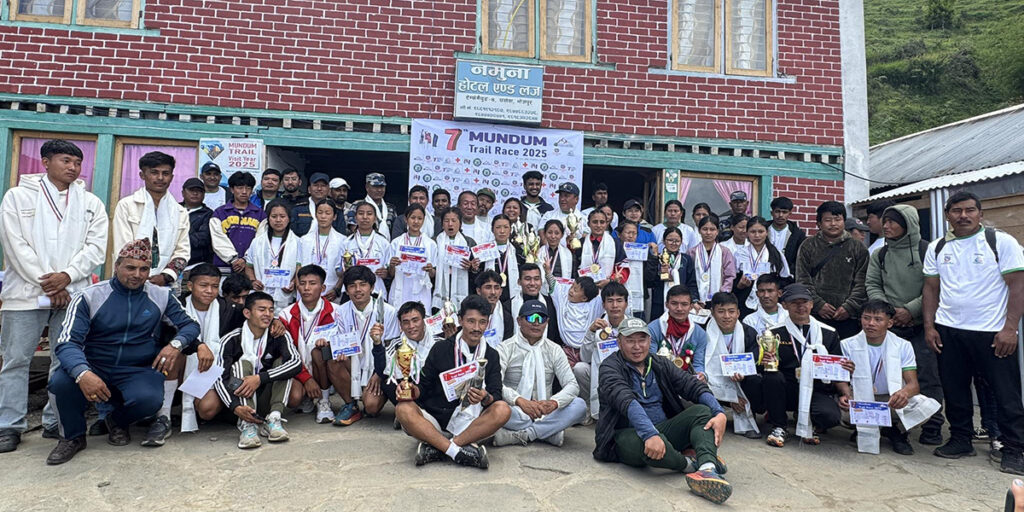
The municipality aims to create a sustainable tourism model by leveraging cultural assets and local participation. The regular organization of this trail race is a testimony to their commitment to fostering tourism in the region.
Broader Vision for Mundum Trail Development
Saroj Basnet, the Chairperson of Temkemaiyung Rural Municipality, emphasized that the Mundum Trail is included in the federal government’s list of top 100 destinations in Nepal. He highlighted the ongoing coordination with neighboring local bodies for integrated development and promotion of the trail.
He further stated that the municipality is continuously working on expanding infrastructure and services along the route to attract more visitors and establish Mundum Trail as a must-visit destination. The ultimate goal is to transform the trail into a sustainable source of economic activity while preserving the cultural and ecological values of the region.
Group Names Reflecting Tourism Sites
The naming of participating groups was also creatively tied to local tourism destinations. The groups were named after prominent natural and cultural landmarks in the Maiyung area, adding a layer of awareness and cultural representation to the event. This strategy not only promoted the trail but also encouraged recognition of lesser-known spots along the Mundum Trek.
Each group’s participation brought attention to different tourism sites, thereby supporting the overarching goal of tourism diversification within the district and its surroundings.
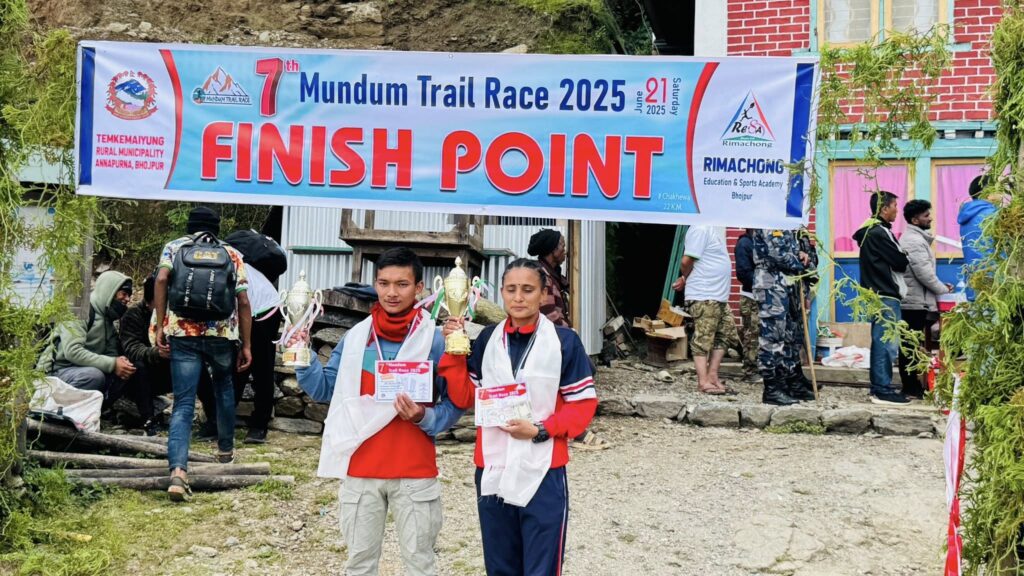
Promoting Tourism Even in the Monsoon
Despite the challenges posed by the monsoon season, the event witnessed successful participation and organization. According to the organizers, the decision to conduct the race during the rainy season was a strategic move to demonstrate that the Mundum Trail can attract internal and international tourists year-round.
This approach aims to redefine the seasonal limitations of tourism in the region and promote the trail as an all-weather adventure destination. The race served as both a sporting challenge and a promotional campaign for year-round tourism.
The successful conclusion of the seventh Mundum Trail Race marks another milestone in the promotion of eastern Nepal’s trekking culture. By blending community engagement, sportsmanship, and tourism promotion, the event has highlighted the importance of creative strategies in local tourism development. With consistent support from local governments and enthusiastic participation, the Mundum Trail is on a promising path toward becoming a nationally and internationally recognized trekking destination.
